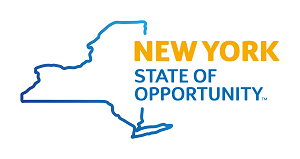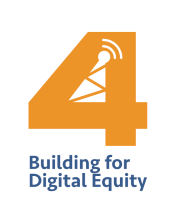
Fast, affordable Internet access for all.

Massachusetts and New York officials hope to entice affordable housing property owners with new grant programs that would pay the retrofitting costs to expand high-speed Internet connectivity into decades-old affordable housing developments.
The programs aim to focus on the multitude of multi-dwelling units (MDUs) in those states, particularly housing developments built before the advent of the Internet.
With property owners and Internet service providers (ISPs) often reluctant to pay the costs of getting these buildings up to broadband speed, Massachusetts and New York have launched initiatives – using a portion of their federal broadband funds – to chip away at the digital divide in housing developments where a significant number of tenants live in buildings not wired to support reliable broadband or where the service is not affordable, thanks to agreements with monopoly providers.

New York Bytes Into Broadband Affordability
In December, New York Governor Kathy Hochul’s office announced the state’s ConnectALL Office (CAO) was setting aside $100 million New York State received from the federal Capital Projects Fund (courtesy of the American Rescue Plan Act) to bring broadband connectivity to 100,000 affordable housing units across the Empire State.
In announcing New York's Affordable Housing Connectivity Program, Hochul said:
“With work, school, and essential government services going digital, affordable homes need affordable, reliable broadband, and this funding will help bolster our efforts to build housing equipped with the basic tools that New Yorkers need to succeed.”

This week on the show we're featuring an episode of our new Building for Digital Equity podcast, which looks at how organizations and individuals around the country do work at the intersections of broadband infrastructure, affordability, access, and skills. From frontline specialists helping households sign up for the Affordable Connectivity Program to building small, digital equity-minded ISPs in Arizona, this series showcases the work and lessons from those helping folks get and stay connected in our communities and towns.
On this episode of the podcast, we talk with Brandon Forester - the National Organizer for Internet Rights at Media Justice. Christopher and Brandon talk about helping communities build more agency over how technology shows up in their neighborhoods and among the digital communities they create for themselves. He shares how Media Justice came to prioritize prison phone justice as one of its first issues, what organizing is and how local solutions may differ across communities, and the need to avoid purity politics in doing digital equity work.
This show is 20 minutes long and can be played on this page or using the podcast app of your choice with this feed.
Transcript below.
We want your feedback and suggestions for the show-please e-mail us or leave a comment below.
Listen to other episodes here or see other podcasts from the Institute for Local Self-Reliance here.
Thanks to Joseph McDade for the music. The song is On the Verge and is used per his Free-Use terms.

Brandon Forester is the National Organizer for Internet Rights at Media Justice. We talk about organizing for digital equity and more specifically Brandon's vision for communities having agency over how technology shows up in their neighborhoods and digital communities. We discuss how Media Justice came to prioritize prison phone justice, what organizing is and how local solutions may differ in different communities, and the need to avoid purity politics in doing this work.
This show is 20 minutes long and can be played on this page or using the podcast app of your choice with this feed.
Transcript below.
We want your feedback and suggestions for the show-please e-mail us or leave a comment below.
Listen to other episodes here or see other podcasts from the Institute for Local Self-Reliance here.
Thanks to Joseph McDade for the music. The song is On the Verge and is used per his Free-Use terms.
*This is the first installment of an occasional profile on Local Community Broadband Champions where we focus not so much on the technology, construction, and financing of a community network build, but on the personalities of the people who make it happen.
When Devin Weaver isn’t vibing at the Otto Bar or checking out the underground music scene at Metro Gallery, or even playing his bass guitar at home, the 28-year-old network engineer enjoys spending time amid the web of wires in storage closets inside low- and mixed-income apartment buildings dotting the city’s landscape.
It’s where his network design handiwork all comes together, snaking through the buildings to the routers installed in individual apartment dwellings, enabling residents to get gig speed Internet service.
That’s on par with what the regional monopoly provider Comcast offers city residents who can afford it. But in the buildings that Devin has made his technical playground, hundreds of financially-strapped households who subscribe to the fledgling community network he oversees get it for free – thanks to the philanthropy of dozens of organizations including the Internet Society Foundation, the France-Merrick Foundation, and the Digital Harbor Foundation.

Born and raised in Baltimore, Devin works for Project Waves, a non-profit organization founded in 2018 by an old high school classmate of his, Adam Bouhmad, to bring broadband to mostly low-income households in Baltimore City.
A Small, Rising Wave of Connectivity

In this episode of the podcast, Christopher is joined by William Sullivan, a resident of the city of Baltimore who works as part of the Digital Equity Leadership Lab. He shares his work in the city in recent years in getting students engaged in building digital skills and computer literacy. By pairing gaming with learning programs, Sullivan and his colleagues not only got students interested in computer hardware, but incented them to build new digital skills that would aid them in college and on the job market later in life. It also, he shares, fostered interest in taking on additional new learning challenges, as well as building new social spaces with people they had not known before.
This show is 16 minutes long and can be played on this page or via Apple Podcasts or the tool of your choice using this feed.
Transcript below.
We want your feedback and suggestions for the show-please e-mail us or leave a comment below.
Listen to other episodes here or view all episodes in our index. See other podcasts from the Institute for Local Self-Reliance here.
Thanks to Arne Huseby for the music. The song is Warm Duck Shuffle and is licensed under a Creative Commons Attribution (3.0) license.
In this episode of the Connect This! Show, co-hosts Christopher Mitchell and Travis Carter (USI Fiber) are joined by guests Joshua Edmonds (City of Detroit) and Jason Hardebeck (Baltimore City) to talk about large cities prioritizing equity in building community broadband.
The panel will talk current events in broadband, what digital equity problems affect their cities, solutions to these problems, and the biggest challenges to implementing those solutions.
Subscribe to the show using this feed on YouTube Live or here on Facebook Live, or visit ConnectThisShow.com.
Email us broadband@muninetworks.org with feedback and ideas for the show.
Watch here on YouTube Live, here on Facebook live, or below.
Last year, nearly two dozen community leaders in Baltimore were brought together with national experts for a five-week crash course on network engineering, federal policymaking, community broadband networking, and grassroots organizing.
It was an online program called “The Digital Equity Leadership Lab (DELL)” – an initiative created by the Robert W. Deutsch Foundation in response to “other digital inclusion programs across the U.S. that have failed to consider the technical aspects of the Internet and social inequalities alongside broader Internet policy and advocacy goals.”
It spawned a case study led by Colin Rhinesmith, Faculty Associate and Director of the Community Informatics Lab at the UCLA Center for Critical Internet Inquiry and a Senior Fellow with the Benton Institute for Broadband & Society. Released earlier this week, The Digital Equity Leadership Lab (DELL): A Case Study of Community Leadership Development to Promote Digital Equity and Justice highlights the importance of developing community-based leaders around digital equity, gifting rising and next-generation digital equity advocates with important insights for their work.
Through interviews with 15 of the 25 DELL participants, and with the input from a range of national experts and Deutsch Foundation staff, the study set out to answer the question: how might DELL serve as a community-based leadership training model to develop the next wave of digital equity leaders?
The analysis surfaced three key findings:
But the study didn’t stop there. Rhinesmith (with research assistance from Jie Jiang and Malana Krongelb) offers three recommendations in light of the study’s findings:
This week, we bring you a special field report from Maryland-based radio and podcast producer Matt Purdy. Through interviews with citizens, digital equity advocates, and the city's new Director of Broadband and Digital Equity, Purdy documents the connectivity struggles that have persisted in Baltimore's historically marginalized neighborhoods for decades.
Those challenges have only become more pronounced with the pandemic, prompting local officials to begin making moves in the direction of something we've not yet seen in a community the size of Baltimore: building a city-owned, open access fiber network.
This is a great story, so we won't give anything else a way. Listen below, or here.

This week on the podcast, radio producer Matt Purdy reports a story on Baltimore’s efforts to build a municipal broadband network that prioritizes equity for historically marginalized communities.
This show is 13 minutes long and can be played on this page or via Apple Podcasts or the tool of your choice using this feed.
Transcript below.
We want your feedback and suggestions for the show-please e-mail us or leave a comment below.
Listen to other episodes here or view all episodes in our index. See other podcasts from the Institute for Local Self-Reliance here.
Thanks to Arne Huseby for the music. The song is Warm Duck Shuffle and is licensed under a Creative Commons Attribution (3.0) license.
With $3.9 billion from the American Rescue Plan Act on its way to Maryland, Gov. Larry Hogan and state legislative leaders have agreed to seize the moment, allocating $300 million of federal COVID-19 relief funds to expand broadband infrastructure and digital inclusion initiatives across the state.
The biggest bulk of the money – $97 million – will go towards funding the building of physical infrastructure with $45 million earmarked specifically for municipal broadband grants.
“The question isn’t how much it’ll cost to bridge the digital divide, the question is how much will it cost if we don’t act right now,” State Senate President Bill Ferguson said at a press conference when the funding was announced.
The bipartisan budget agreement was hailed by Gov. Hogan, a Republican, as an example for the nation demonstrating how “people from different parties can still come together, that we can put the people’s priorities first, and that we can deliver real, bipartisan, common sense solutions to the serious problems that face us.”
One “serious problem” in Maryland, according to a recent Abell Foundation report, is that 23 percent of Maryland households (520,000) do not have a wireline home Internet connection, 40 percent (or 206,000) of which are Black households.
Much of that comes from a lack of affordability and other barriers to adoption. To deal with those challenges, the budget agreement also includes $45 million to subsidize monthly Internet service costs for qualifying families and $30 million to pay for Internet-connected devices for financially eligible households. It also includes an additional $4 million for a new University System of Maryland program to support training and developing curriculum to bridge the digital divide as well as $2 million for digital navigator programs.